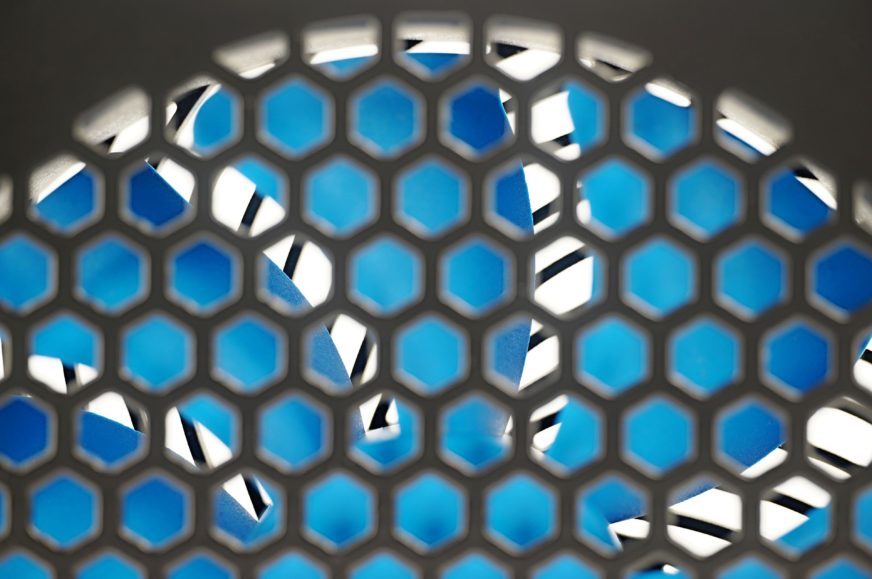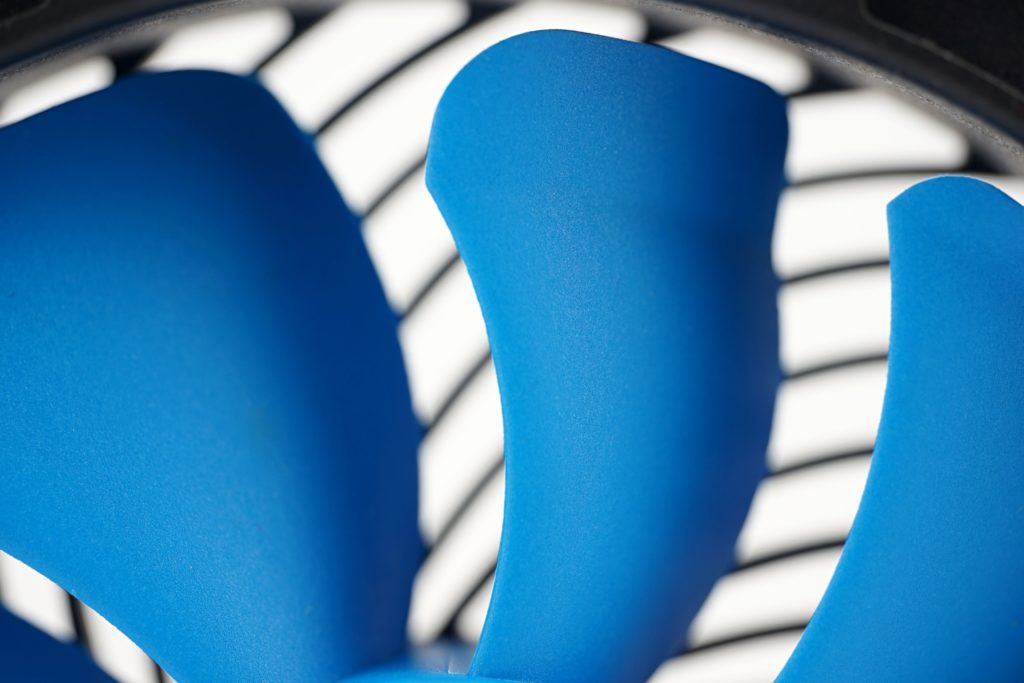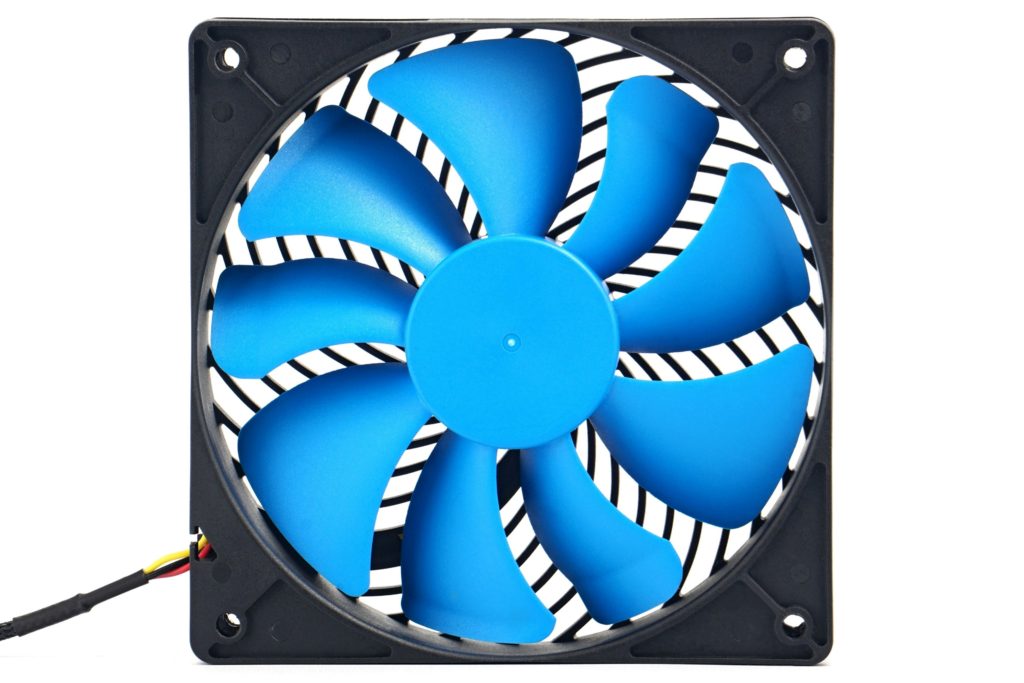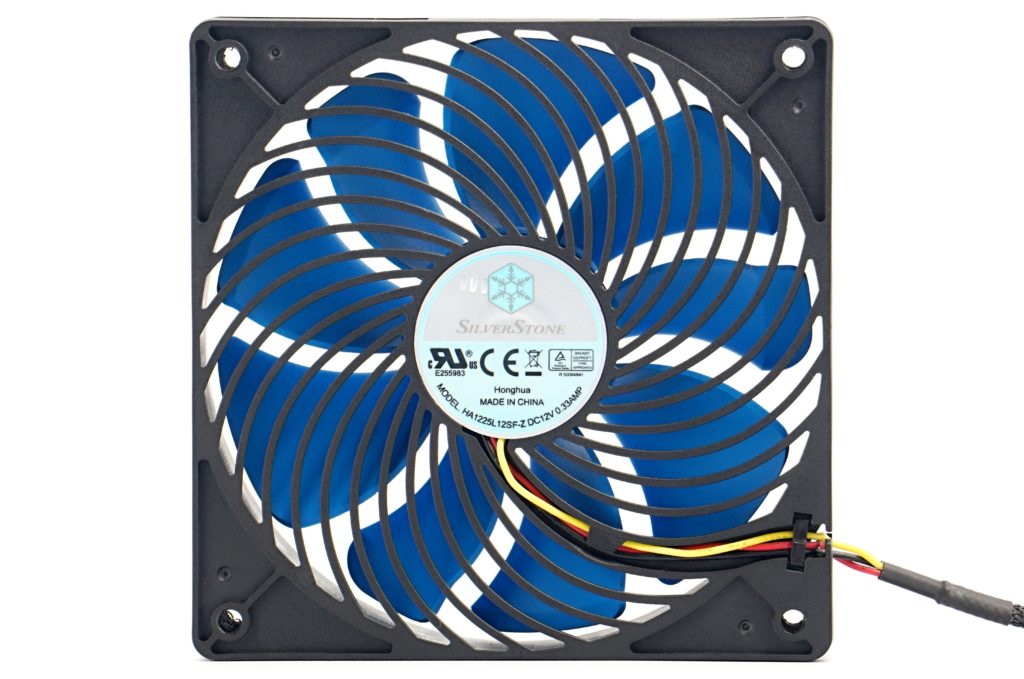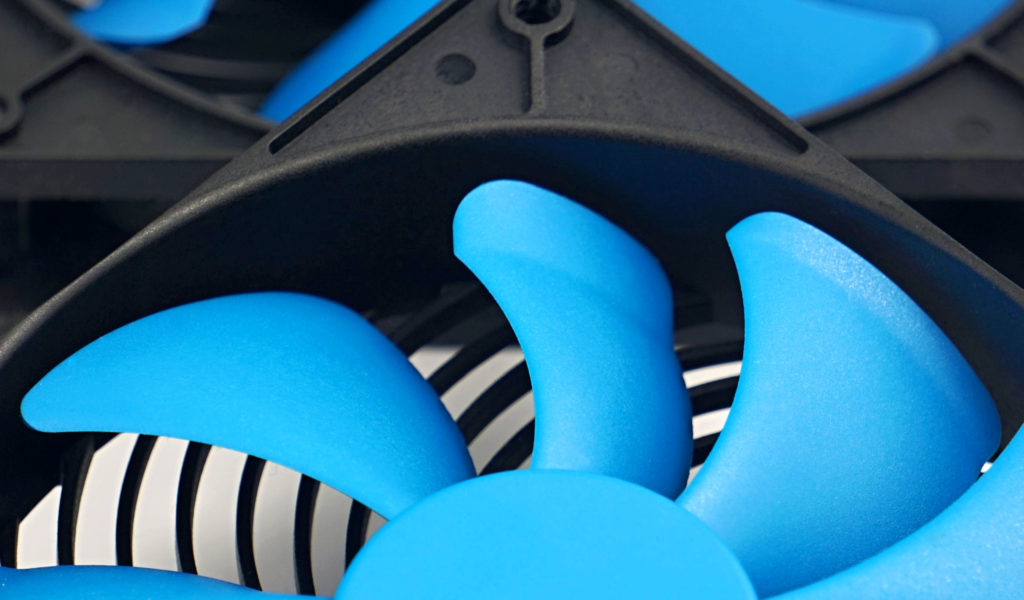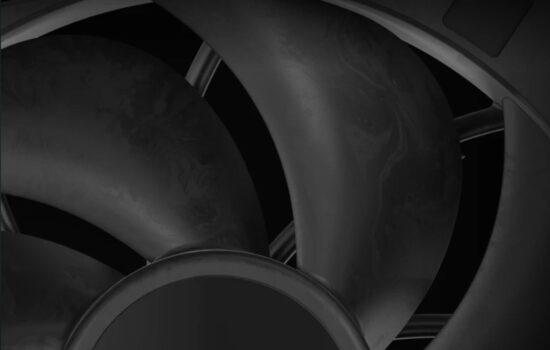SilverStone SST-AP123 in detail
A harsh headline, but a fair one. We always try to find mostly good things when testing, but sometimes it’s tricky. That’s the case here, where SilverStone is misleading its customers. The grille doesn’t significantly increase noise? We have no sympathy for hoaxes like this. Especially when it’s all “well thought out” and staged. Such practices do not shed a good light on the combination of three different blade shapes, which actually has something to it.
The SST-AP123 fan is no longer sold and we believe SilverStone will take this test not as an attack, but perhaps as a well-deserved slap in the face. It would be great and amazing if the marketing team would rethink the way of presenting a feature that is quite interesting and applies to, for example, the Air Penetrator 120i Pro, the successor of the tested AP123 model as well. These fans break the stereotype that all blades in a rotor have to be the same. They don’t. And it makes pretty good sense that they shouldn’t be one like the other.
It’s a remarkable idea, but we urge SilverStone to think harder about how it wants to work with and communicate its uniqueness to the public. The claim that “there is almost no change in noise with the grille in front of the rotor”, and the video comparison with the Gentle Typhoon is supposed to be proof of that, is… trustworthy until you see yourself that the AP123 fan doesn’t quite work like that or until you go through our in-depth analyses, which also show everything. But first is to understand more of the little things and put them in context.
| Brand and model of fan | Paper specicifations * | Price [EUR] | ||||||||
| Format (and thickness) in mm | Connecting | Speed [rpm] | Airflow [m3/h] | Static pressure [mm H2O] | Noise level [dBA] | Bearings | MTBF [h] | |||
| Motor | RGB LED | |||||||||
| SilverStone SST-AP123 | 120 (25) | 3-pin (DC) | N/A | 1500 | 96.84 | 1.46 | 23.8 | fluid | 50 000 | 25 |
| Noctua NF-P12 redux-1700 PWM | 120 (25) | 4-pin (PWM) | N/A | 400–1700 | 120.20 | 2.83 | 25.1 | SSO | 150 000 | 13 |
| SilentiumPC Fluctus 120 PWM | 120 (25) | 4-pin (PWM) | N/A | 300–1800 | N/A | N/A | N/A | fluid | 100 000 | 12 |
| MSI MEG Silent Gale P12 | 120 (25) | 4-pin (PWM) | N/A | 0–2000 | 95.48 | 2.21 | 22.7 | hydrodynamic | 50 000 | 31 |
| Asus ROG Strix XF120 | 120 (25) | 4-pin (PWM) | N/A | 1800 | 106.19 | 3.07 | 22.5 | „MagLev“ | 400 000 | 23 |
| Akasa Vegas X7 | 120 (25) | 4-pin (PWM) | 4-pin (12 V) | 1200 | 71.19 | N/A | 23.2 | fluid | 40 000 | 11 |
| Reeven Coldwing 12 | 120 (25) | 4-pin (PWM) | N/A | 300–1500 | 37.54–112.64 | 0.17–1.65 | 6.5–30.4 | sleeve | 30 000 | 12 |
| Reeven Kiran | 120 (25) | 4-pin (PWM) | shared | 400–1500 | 110.10 | 2.95 | 33.6 | fluid | 120 000 | 17 |
| SilentiumPC Sigma Pro 120 PWM | 120 (25) | 4-pin (PWM) | N/A | 500–1600 | 79.00 | N/A | 15.0 | hydraulic | 50 000 | 7 |
| SilentiumPC Sigma Pro Corona RGB 120 | 120 (25) | 4-pin (PWM) | 4-pin (12 V) | 1500 | 56.58 | N/A | N/A | hydraulic | 50 000 | 12 |
| SilverStone SST-AP121 | 120 (25) | 3-pin (DC) | N/A | 1500 | 60.08 | 1.71 | 22.4 | fluid | 50 000 | 18 |
| SilverStone SST-FQ121 | 120 (25) | 7-pin (PWM) | N/A | 1000–1800 | 114.68 | 0.54–1.82 | 16.4–24.0 | PCF (fluid) | 150 000 | 20 |
| Xigmatek XLF-F1256 | 120 (25) | 3-pin (DC) | N/A | 1500 | 103.64 | N/A | 20.0 | „long-life“ | 50 000 | 16 |
* When reading performance values, a certain amount of tolerance must always be taken into account. For maximum speeds, ±10 % is usually quoted, minimum speeds can vary considerably more from piece to piece, sometimes manufacturers will overlap by as much as ±50 %. This must then also be adequately taken into account for air flow, static pressure and noise levels. If only one value is given in a table entry, this means that it always refers to the situation at maximum speed, which is achieved at 12 V or 100 % PWM intensity. The manufacturer does not disclose the lower limit of the performance specifications in its materials in that case. The price in the last column is always approximate.
Using different shaped blades in the rotor is a good idea from a certain point of view. Why? If all the rotor blades are the same, then the sound spectrum is always dominated by one frequency that is significantly louder than the second loudest, and this sets the character of the aerodynamic sound of the fan. It either hums at low frequencies, buzzes at higher frequencies or is somewhere in the middle.
To break these peaks (strongly dominant frequencies), various notches are also helpful, such as those used by Noctua or even SilentiumPC with the Fluctus 120 (although the intention of this fan was only partially successful). But SilverStone goes a bit of a different way with the AP123.
Another way to eliminate these peaks and spread the aerodynamic noise more evenly over a wider range of sound frequencies is by using different blades. This is because each one produces a different sound and no one tone stands out significantly, making such a fan more pleasant to listen to. No frequency is too loud and the “noise” of the fan is probably more bearable for most.
The three different triplets of blades are there for a reason in this regard. One is wide with a large area, the other is narrow and also with a sort of curve at the end. This, but smaller, also is on the blades with a medium size. In short, one can see the effort to make each blade produce a dominant sound in the octave of the sound spectrum. SilverStone deserves praise on this aspect, this has been really successful and it works really well, as can be seen in our spectrographs. So yes, compared to conventional rotors that have all blades the same (and smooth, without notches) the description about noise reduction at critical frequencies agrees. No objections here.
The grille behind the rotor is also quite unusual. It naturally laminarizes the rotor’s turbulent flow, creates higher pressure (dynamic, not static) and the fan will have a greater “reach” at the intake, which in practice is theoretically useful in the position of the intake system fans in a case. These are always relatively unimportant (compared to exhaust fans), but so be it… the grille behind the fan does make things worse on heatsinks/radiators though (at least in the traditional “push” orientation), for which a more turbulent airflow at the intake is preferable. With this as well, SilverStone sends a message about the AP123’s single-purpose nature.
The structural design of the fan is of a high standard. The rotor has no imperfections on the surface, the mould (injection moulding), the manufacturing process and the finishing are consistent. For such a complex design, SilverStone had to take extra care just for the appropriate balance. Making sure everything is just right when mixing different blades is certainly more challenging and requires more precision than with rotors with uniform blades.
The frame is also solid, with no obvious flaws. It is firm and also precise. The contents of the package, besides the fan itself, consist of really soft (27-30 shore?) anti-vibration spikes for mounting in a case, and alternatively traditional self-tapping screws are also available.
We have a small complaint about the quality of the packaging material. It is very simple, the inner partition is made only of folded cardboard, which is, of course, fine. What’s worse is that the box crumbles under the hands. Somehow not enough glue is used to glue the securing walls of the box. But that’s, naturally, a minor detail. Still, we’re used to the packaging of more expensive fans, as is the AP123, being considerably more robust.
The power cable is properly braided, long (50 cm) and with a 3-pin connector. Speed regulation is DC, which means by changing the fixed voltage level.
- Contents
- SilverStone SST-AP123 in detail
- The basis of the methodology, the wind tunnel
- Mounting and vibration measurement
- Initial warm-up and speed recording
- Base 7 equal noise levels…
- .. and sound color (frequency characteristic)
- Static pressure measurement…
- … and airflow
- Everything changes with obstacles
- How we measure power draw and motor power
- Measuring the intensity (and power draw) of lighting
- Results: Speed
- Results: Airflow w/o obstacles
- Results: Airflow through a nylon filter
- Results: Airflow through a plastic filter
- Results: Airflow through a hexagonal grille
- Results: Airflow through a thinner radiator
- Results: Airflow through a thicker radiator
- Results: Static pressure w/o obstacles
- Results: Static pressure through a nylon filter
- Results: Static pressure through a plastic filter
- Results: Static pressure through a hexagonal grille
- Results: Static pressure through a thinner radiator
- Results: Static pressure through a thicker radiator
- Results: Static pressure, efficiency by orientation
- Reality vs. specifications
- Results: Frequency response of sound w/o obstacles
- Results: Frequency response of sound with a dust filter
- Results: Frequency response of sound with a hexagonal grille
- Results: Frequency response of sound with a radiator
- Results: Vibration, in total (3D vector length)
- Results: Vibration, X-axis
- Results: Vibration, Y-axis
- Results: Vibration, Z-axis
- Results: Power draw (and motor power)
- Results: Cooling performance per watt, airflow
- Results: Cooling performance per watt, static pressure
- Airflow per euro
- Static pressure per euro
- Results: Lighting – LED luminance and power draw
- Results: LED to motor power draw ratio
- Evaluation





